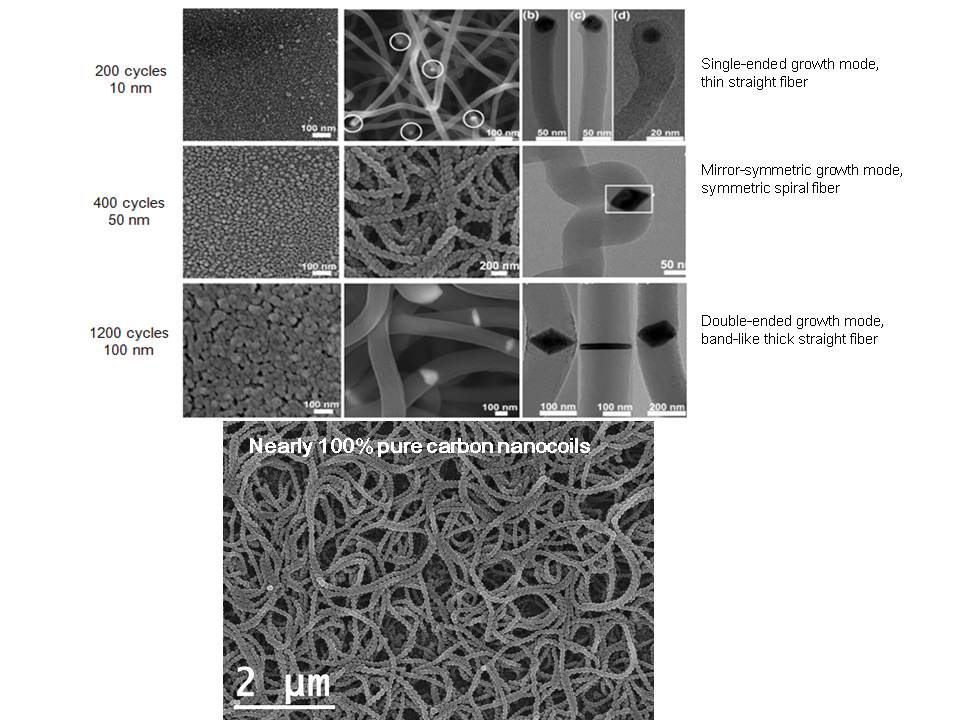Progress in Synthesis and Application of New Functional Nanomaterials by Atomic Layer Deposition Achieved
 Update time :2020-08-20 Soure:State Key Laboratory of Coal Conversion
Update time :2020-08-20 Soure:State Key Laboratory of Coal Conversion
 Update time :2020-08-20 Soure:State Key Laboratory of Coal Conversion
Update time :2020-08-20 Soure:State Key Laboratory of Coal Conversion
Group 903 of State Key Laboratory of Coal Conversion has synthesized various new functional nanomaterials by Atomic Layer Deposition (ALD) under the support of Chinese Academy of Sciences (CAS), National Natural Science Foundation of China (NSFC) and cooperators. These new nanomaterials are widely used in different fields such as environmental protection, catalysis, microwave-absorbtion and so on. The related results have been published in ACS Nano (2014, 8, 5330-5338), Nano Research (2014, 7, 704-716), ACS Applied Materials & Interfaces (2015, 7(8), 4772-4777), Carbon (2015,82, 470-478), Nanoscale (2014, 6, 6692-6700), RSC Advances (2015, 5 4343-4349) and so on.
ALD technology applied in catalysis
Carbon nanocoils (CNCs) possess unique morphology and attract great interest due to their unique mechanical, thermal, electric, and magnetic properties. The particle size of the catalyst may substantially conduct the growth of CNCs. However, limited to the technological hurdles of traditional methods including the size and size distribution control of the catalytic particles, it is still a challenge to synthesize CNCs with uniform morphology and high purity. Our group synthesized Cu nanoparticles with narrow size distribution by reduction of CuO films produced by atomic layer deposition (ALD), which are used as catalysts to decompose acetylene to effectively produce uniform CNCs. By properly adjusting the ALD cycle numbers, the size of produced Cu nanoparticles can be well controlled. Uniform carbon nanocoils with near 100% purity can be obtained by using 50-80 nm Cu nanoparticles, while thin straight fibers and thick straight fibers are produced by applying 5-35 and 100-200 nm Cu nanoparticles, respectively. The mechanism of the particle size-dependent growth of the carbon nanostructure was analyzed based on the experimental results and theoretical simulation. In this study, we used the prominent advantages of ALD to synthesize catalyst with uniform size distribution and to achieve convenient morphological control for the catalytic growth of carbon nanostructures. The strategy we present is simple, controllable, and reproducible, demonstrating that ALD offers us the possibility for convenient synthesis of catalytic nanoparticles with highly controllable size and size distribution to study particle size-dependent catalytic behavior and will give guidance to obtain highly pure nanostructure materials with uniform morphology in large quantity. The results are published in ACS Nano (2014, 8, 5330-5338).

Materials with one-dimensional structure such as TiO2 nanotube arrays (TNTAs) are often used as anode in photoelectrochemical water splitting (PEC) due to its shorter charge transportation path, which can suppress the recombination of photogenerated electron-hole pairs and improve the photoelectric conversion efficiency. By coorperating with Group 909 of State Key Laboratory of Coal Conversion, TiO2 nanotube arrays prepared by electrochemical corrosion were conformally coated with an ultrathin nitrogen-doped (N-doped ) carbon film via the carbonization of a polymide film deposited by molecular layer deposition and under hydrogenation atmosphere. It was found that the N-doped carbon film coated TNTAs displayed remarkably improved photocurrent and photostability. The current density of this sample is almost 6 times higher than that of TNTAs. Furthermore, the core/shell nanostructure provides a larger heterojunction interface to substantially reduce the recombination of photogenerated electron-hole pairs, and hydrogenation enhances the solar absorption of TNTAs. The results provide new ideas for preparation of stable and efficient electrode materials by ALD and are published in Nanoscale (2014, 6, 6692-6700).